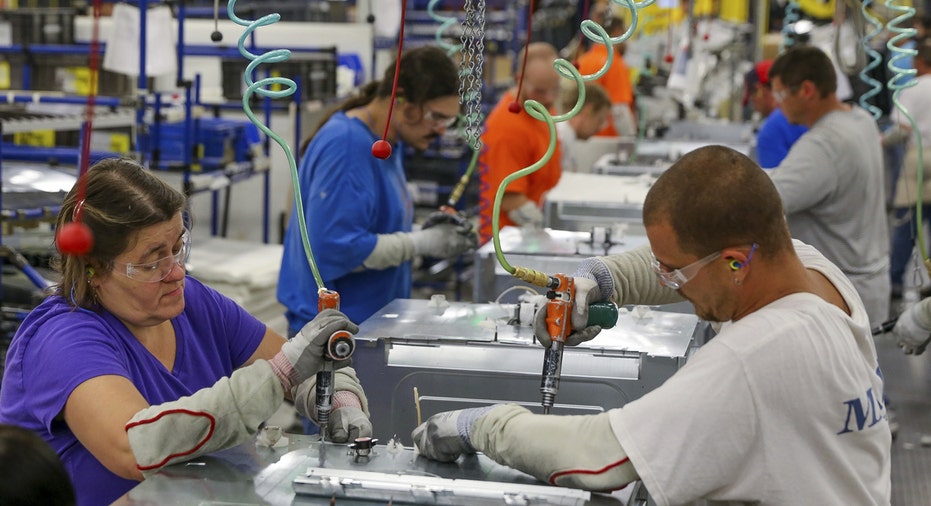Inventories Hurt 3Q GDP, Domestic Demand Strong

U. S. economic growth cooled in the third quarter as firms let inventories dwindle and the pace of spending on the part of consumers, businesses and governments all decelerated. Gross domestic product, the broadest measure of goods and services produced across the economy, advanced at a 1.5% seasonally and inflation adjusted annual rate in the third quarter, the Commerce Department said Thursday. That matched the forecast of economists surveyed by The Wall Street Journal. The July-through-September reading marks a sharp deceleration from the second quarter, when the economy expanded at a 3.9% rate. But the third-quarter slowdown largely reflected a change in inventory levels, which subtracted 1.44 percentage points from the overall advance. A measure of purchases by U.S. residents that excludes changes in inventory levels rose at a much healthier 2.9% pace last quarter. "The domestic economy isn't on fire, but demand is looking relatively solid," said James McCann, an economist with Standard Life Investments. "International developments take the sheen of it, but we think the momentum is genuine." The signal from inventory figures can be difficult to discern because the data is highly volatile from quarter to quarter. The latest swing could be a correction from overproduction in the first half of the year. But it could show soft factory output. "The slower pace of inventory building in the third quarter likely reflects the weakness in domestic manufacturing in our view, and is unlikely to persistent beyond year-end," Barclays economist Jesse Hurwitz wrote in a note to clients. From a year earlier, the economy advanced 2% in the third quarter. That represents the slowest year-over-year advance since the first quarter of 2014--showing the economy remained locked into a modest growth rate as the expansion entered its seventh year this summer. The unspectacular overall growth is a worrying sign that the economic expansion could be losing steam. While the stronger dollar and the slowdown in China didn't cause trade to drag on U.S. output last quarter, there is little expectation that the global economy will support domestic growth heading into next year. At the same time, lower gasoline prices have propped up consumer spending, but that effect could fade a year after a big drop in oil prices occurred. Meanwhile, employers in recent months slowed their pace of hiring after of adding an average of more than 200,000 jobs a month for a year and a half. And a large number of Americans remain on the sidelines of the labor market, and wage growth has been unimpressive, factors that could restrain consumer spending. Consumer spending increased at a 3.2% rate in the third quarter, only a slight slowdown from the 3.6% advance during the prior three months. The recent gain was led by strong spending on long-lasting goods, including vehicles. The growth in consumption was supported by an increase in inflation-adjusted incomes, said Paul Ashworth, economist at Capital Economics. "Whether real incomes will continue to expand at such a rapid clip in the fourth quarter remains to be seen," he said. "Gasoline prices have stabilized, employment gains have slowed and hourly wages still haven't taken off." The latest reading on economic growth, and a subsequent revision next month, will weigh on the minds of Federal Reserve officials when they meet next in December. The Fed held benchmark interest rates steady on Wednesday. The central bank said the economy "has been expanding at a moderate pace," while explicitly noting that will consider a rate increase at its next policy-making meeting. Thursday's report showed spending on home building and improvements rose by 6.1%, a slowdown from the roughly 10% growth rate recorded over the prior three quarters. Business investment advanced modestly last quarter, up 2.1% versus 4.1% in the second quarter. Spending on construction declined, but investments in equipment increased at a faster pace than in the spring. The pace of spending on intellectual property slowed. Trade was basically a neutral factor for the overall economy, subtracting 0.03 percentage point from the growth rate. Exports, which add to output, increased at a 1.9% rate during the quarter. Imports, which subtract from output, increased 1.8%. Trade was basically a neutral factor for the overall economy, subtracting 0.03 percentage point from the growth rate. Exports, which add to output, increased at a 1.9% rate during the quarter. Imports, which subtract from output, increased 1.8%. Government spending, which has largely been a drag on economic growth since 2010, advanced at an 1.7% pace in the third quarter, a slowdown from the 2.6% gain the prior quarter. Third-quarter spending at the state and local level offset a pull back in defense outlays.